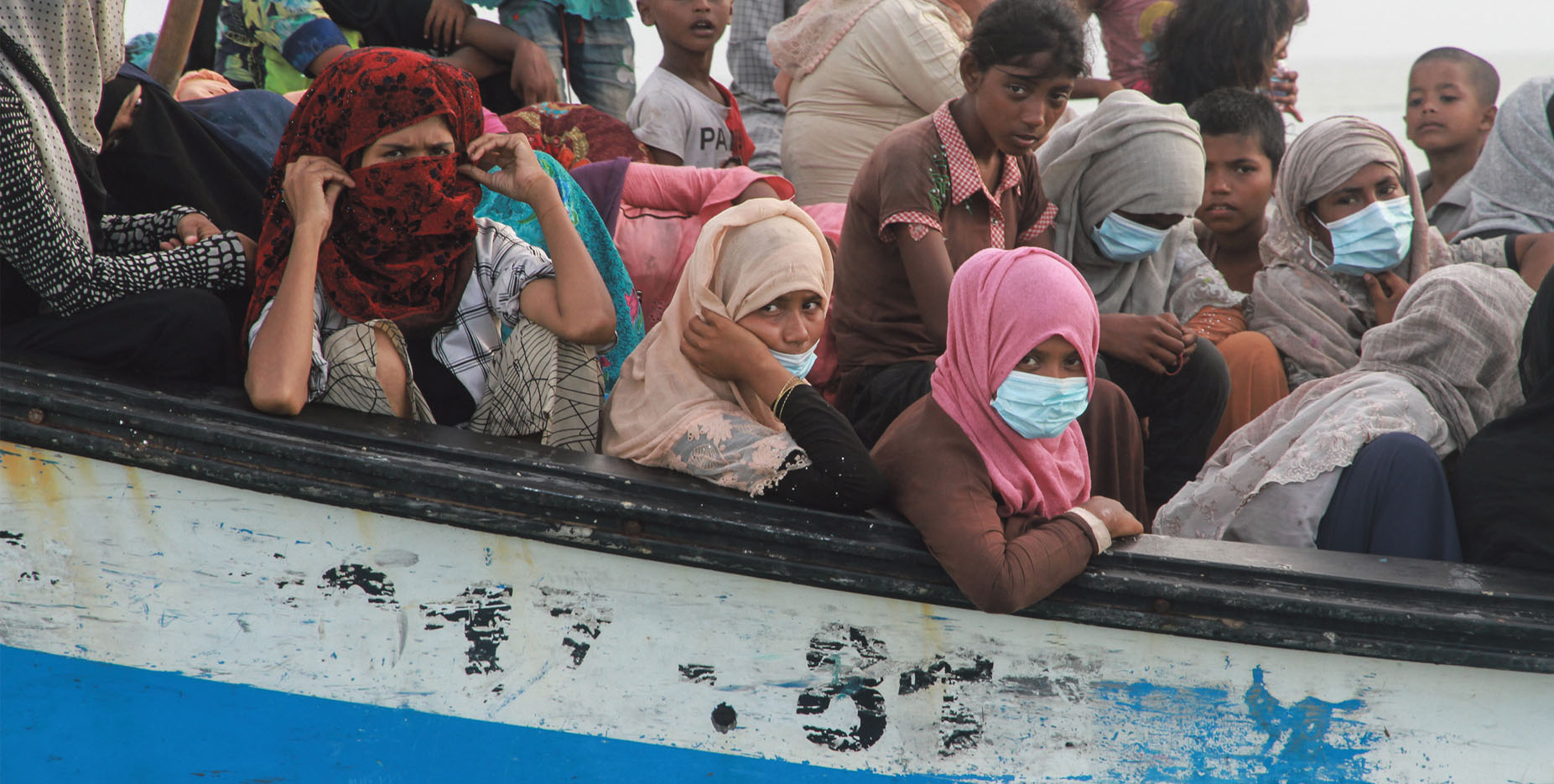
Elham Asaad Buaras
Twenty-three Rohingya refugees including 13 women, have been killed and 30 remain missing after a boat capsized in bad weather in the Bay of Bengal in the Indian Ocean earlier this month, aid workers in Myanmar said.
The bodies were recovered along the shore in Sittwe, about 335 kilometres west of Myanmar’s capital, Naypyitaw, between August 7 and 9.
Only eight refugees were rescued from the boat, which was headed for Malaysia.
About 55 people were on the boat when it left Buthidaung township in the western state of Rakhine on August 6, said Byar La, General Secretary of Shwe Yaung Metta Foundation, a rescue NGO based in Rakhine, Myanmar.
“We found dead bodies starting from August 7,” said Min Htal Wah, Chair of the Foundation.
“Within three days, we found 17 dead bodies… We found some people alive,” he said, adding that 10 women were among the dead.
Survivors of the boat sinking this week recall being struck by a large wave near Rakhine’s capital, Sittwe.
They say the smugglers, who had been paid around $4,000 (£3,153) per person for the journey to Malaysia, then abandoned the boat. The bodies of the victims have been picked up by other boats or washed up on the beach.
The long journey across the Andaman Sea in overcrowded fishing boats is always dangerous, but especially at this time of the year, at the peak of the monsoon storm season.
According to a Rohingya charity worker in Maungdaw township, near the Bangladesh border, the boat left in severe weather, and over 500 others were still seeking to escape to Malaysia.
Nearly a million Rohingya people live in overcrowded conditions in Bangladesh, including those who fled Myanmar’s military’s murderous crackdown in 2017.
According to UNHCR data from January, more than 3,500 Rohingya refugees attempted crossings of the Andaman Sea and the Bay of Bengal in 2022, up from 700 the previous year.
At least 348 Rohingya died or went missing at sea last year, the agency said, calling for a regional response to stop further drownings. The UN High Commissioner for Refugees says calls for maritime authorities in the region “to rescue and disembark people in distress have gone unheeded, with many boats adrift for weeks”.
The Rohingya, a Muslim minority in Buddhist-majority Myanmar, have long faced persecution. Since August 2017, when the military initiated a clearance operation, over 700,000 people have fled Myanmar to refugee camps in Bangladesh. Rohingya are effectively denied citizenship under Myanmar’s 1982 Citizenship Law, rendering them stateless. The 2017 atrocities were rooted in decades of state repression, discrimination, and violence.
“In Myanmar, we struggled through life,” Hasina Hatu, 40, said. “When we raised goats, the border guard forces took away the goats. When we raised cattle, they took away the cattle. When we farmed paddy fields, they took away the rice.” Hasina’s father died after falling down a muddy slope as they fled in 2017.
Myanmar’s military has denied allegations that security troops raped and killed civilians and burned down thousands of homes during the clearance campaign. The US government has declared the military’s conduct to be genocide.
In addition to those living in cramped refugee camps in Bangladesh, more than 100,000 Rohingya remain in Myanmar, confined to dismal displacement camps.
To seek better living conditions, groups of Rohingya from both nations have gone on perilous journeys to the Muslim-majority countries of Malaysia and Indonesia.
Myanmar has denied citizenship to most Rohingya. They are also denied freedom of movement and other rights, including education. Authorities in Myanmar say the Rohingya migrated illegally from Bangladesh, even though many of their families have lived in Myanmar for decades.
In Bangladesh, about one million Rohingya refugees live in sprawling, overcrowded camps in Cox’s Bazar and the isolated silt island of Bhasan Char. For five years, the Bangladesh government has respected the international principle of nonrefoulement, the right of refugees not to be returned to a country where their lives or freedom would be threatened.
However, Bangladesh authorities have recently intensified restrictions on livelihoods, movement, and education that make many refugees feel unwelcome and at risk. Officials have closed community-led schools, arbitrarily destroyed shops, and imposed new obstacles on travel.
“If our children can’t be educated here in Bangladesh either, then anywhere we go, we will still be persecuted,” Abdul said.
According to Human Rights Watch Bangladesh authorities have moved about 28,000 Rohingya to Bhasan Char, where they face severe movement restrictions, food and medicine shortages, and abuses by security forces.
Despite the involvement of the UNHCR, many continue to be transferred without full, informed consent, and have been prevented from returning to the mainland. Bangladesh authorities should lift the new restrictions and end forced relocations of refugees, Human Rights Watch said.
“How long will we live like this?” Hasina said. “I don’t think the world will solve our condition.”
The Bangladesh government and Myanmar junta have renewed discussions around repatriation, announcing in January joint plans to “expeditiously complete the verification process.”
Two prior repatriation attempts failed, with Rohingya refugees unwilling to return due to the ongoing persecution and abuse in Myanmar. Michelle Bachelet, the outgoing UN high commissioner for human rights, announced on August 17, following a visit to Cox’s Bazar, that “the current situation across the border means that conditions are not right for returns.”
Photo: Archive photo of rescued Rohingya refugees on a fishing boat after their boat capsized near Suenuddon Beach, Aceh, Indonesia on June 25, 2020.
(Credit: Khalis Surry/Anadolu Agency)